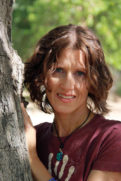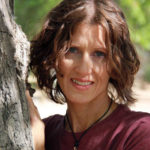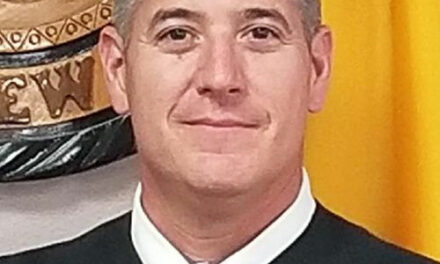“It is, then, to answer your question, ‘What enrichment, what peace of mind can I find in coming to know the things of this earth, which is my home?’”
In 1965, the National Audubon Society responded to this question, publishing a 12-volume set of books called the “Audubon Nature Encyclopedia.” In the foreword of Volume 1, the society’s president, Carl W. Buchheister, wrote, “We feel that millions of Americans are hungering for a new source of contact with the realities of their earthly environment, of the world of nature. For nearly two thousand year’s, man’s exciting, halting struggle to become civilized has, ironically perhaps, actually divorced him from nature. And yet we are part of nature, dependent upon the fruits of the earth for our health and welfare, molded by the environment which we also mold.

Colleen Dougherty
“Today science is beginning to document, all over again, that man is of the dust, that he is indeed his brother’s keeper, and that this brotherhood includes all God’s creatures. In rising to the challenge of this broader awareness we will have to rethink the directions in which we want our civilization to move. We believe that it is only by enlarging his sympathies that man becomes truly civilized.
“… We learned long ago that birds and other living things cannot be preserved for man’s benefit and enjoyment unless the habitat they need is also preserved, Man’s powerful new tools, when used unwisely, can be destructive. Today’s conservation problems therefore include decisions concerning priorities in our uses of the land … decisions made at all levels-personal, corporate, and governmental.
“Believing in the wisdom of nature’s design, we devote our efforts … to awakening the American people to the magnificence and the vital importance of their natural resources heritage.”
Languishing in Buchheister’s hopeful, poetic words, I wondered — what is it that draws humans to nature? All of us, no matter what culture we hail from, began our journeys on earth with a deep connection to it. We learned to plant, grow, and harvest food by collaborating with the soil, water, and seasons. We hunted, not for sport or money, but to feed our families. We created stories and legends based on the stars, the moon, and the animals. And yet, in the 55 years since Audubon’s encyclopedias were published, we’ve lost 30 percent of our entire bird population and nearly 70 percent of all wildlife species due to human activity.
More than a quarter million square miles of the Amazon Rainforest is gone, replaced largely by pasture land for cattle. We have a “plastic island” in the ocean twice the size of Texas, and enough cigarette butts on the ground in one year that if we lined them up, would reach to the moon and back many times over.
How could we have let this happen? Some believe that because things seem to change gradually, we’ve failed to notice the full impact of what’s truly happening. Some are in denial, saying “it’s not really happening,” or “the planet is so big, how could we possibly destroy it?” Still others take the bystander approach, concluding that “other people are helping so I don’t have to.”
Luckily, some are helping. Since the Audubon society began in 1905, a host of other environmental organizations have been created, like the Nature Conservancy (1951) World Wildlife Fund (1961) and the Arbor Day Foundation (1972), which has helped the U.S. Forest Service plant more than 20 million forestland trees since 1990. These and many others have been actively trying to restore balance to the planet one day, one species, one victory and often one disaster at a time. And they’re not completely alone.
In 2001, TerraCycle began harvesting hard-to-recycle and hazardous materials like cigarette butts (which can be turned into things like plastic lumber) In 2019, a Dutch teenager designed a solar-powered barge he called Interceptor that scoops up trash from rivers before it reaches the ocean. The first one pulled up 220,000 pounds of trash in one day in Indonesia. There are now four Interceptor barges operating around the world.
Yet there’s still something chilling about Carl Buchheister’s hopeful but cautionary essay, which ended with the hope that “a journey through these pages will be a source of inspiration to you and your family to personally share in the preservation of the resources that have made this earth productive.” We haven’t heeded that caution, so the message repeats.
April 22 will be the 51st anniversary of Earth Day, an event that now draws over a billion people worldwide. Maybe there’s still hope.

















